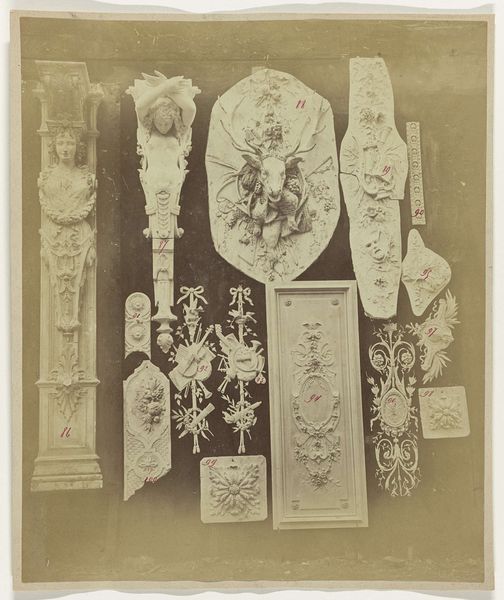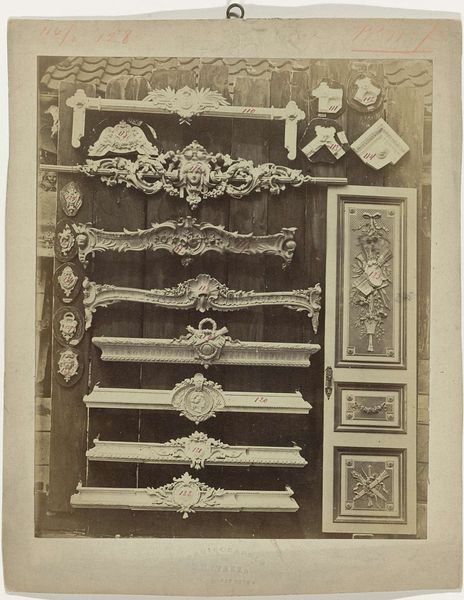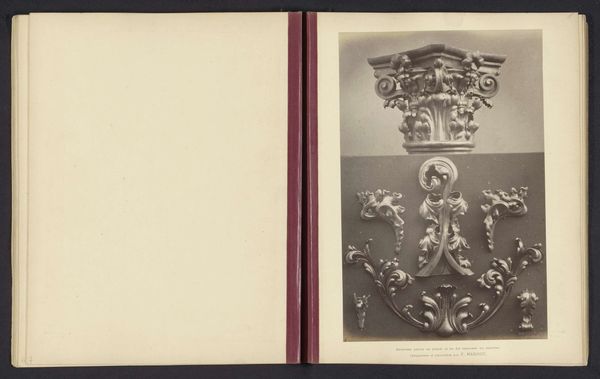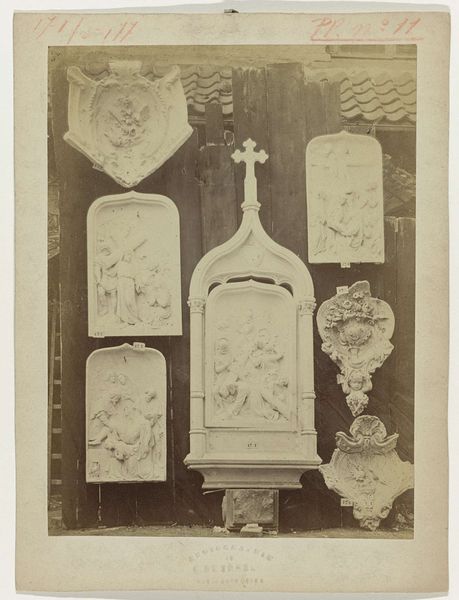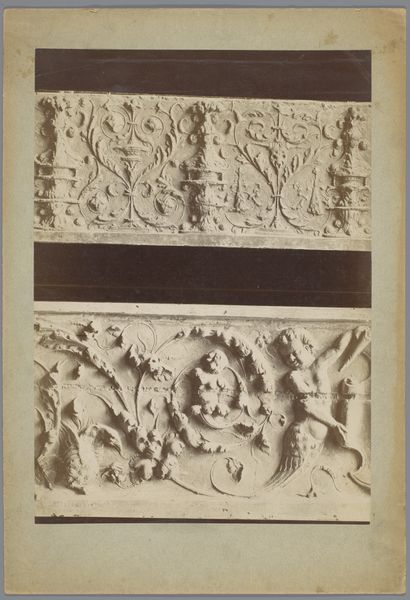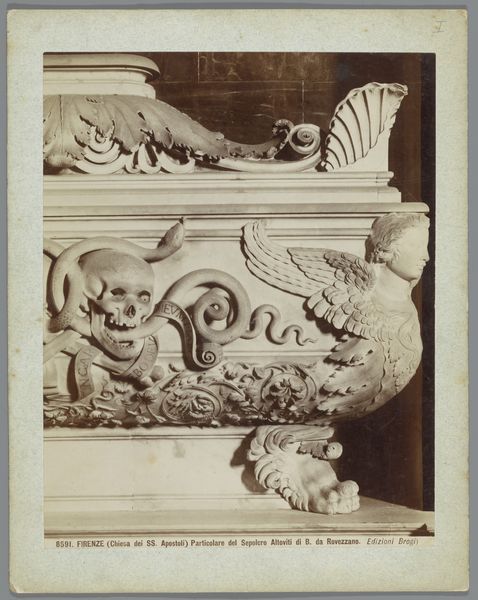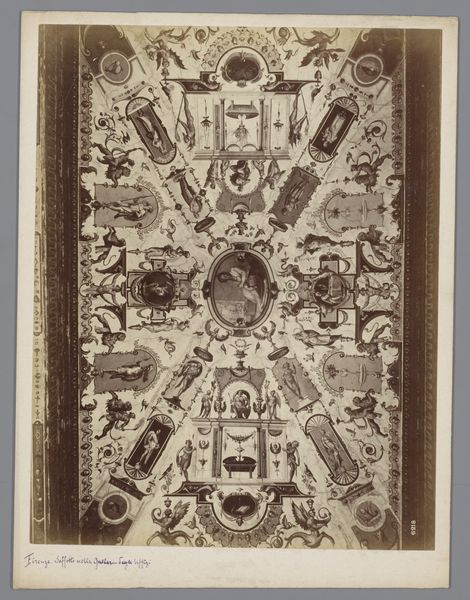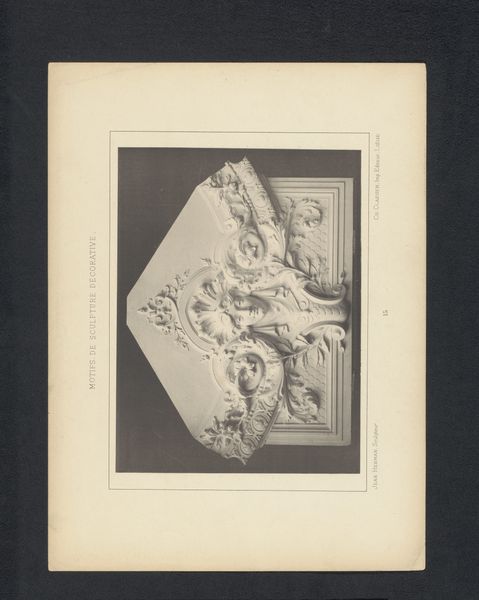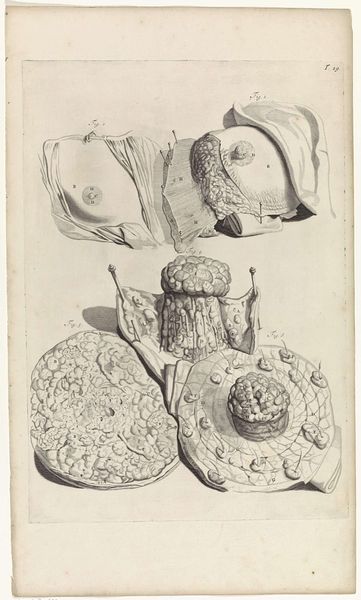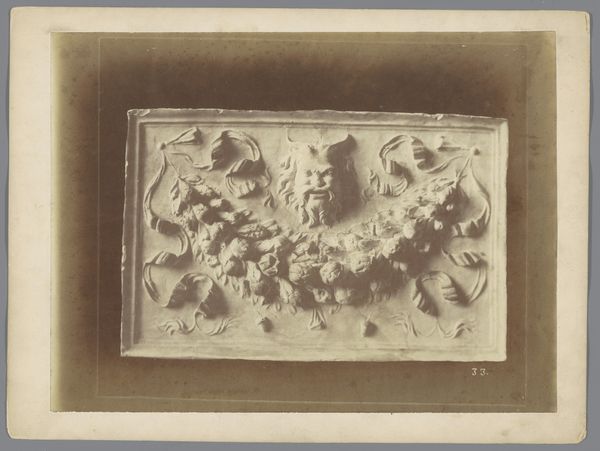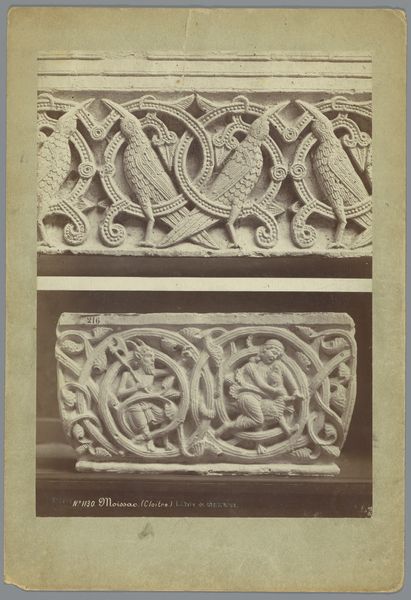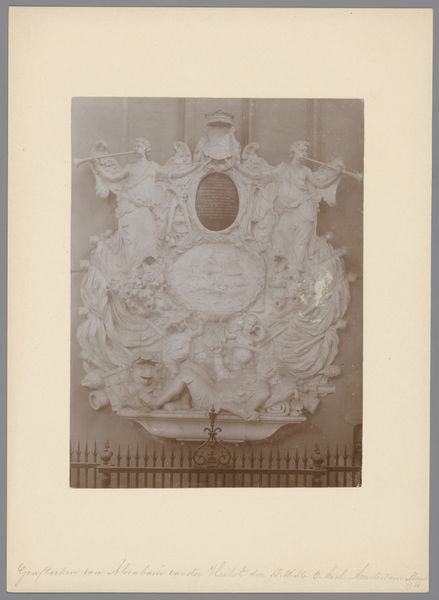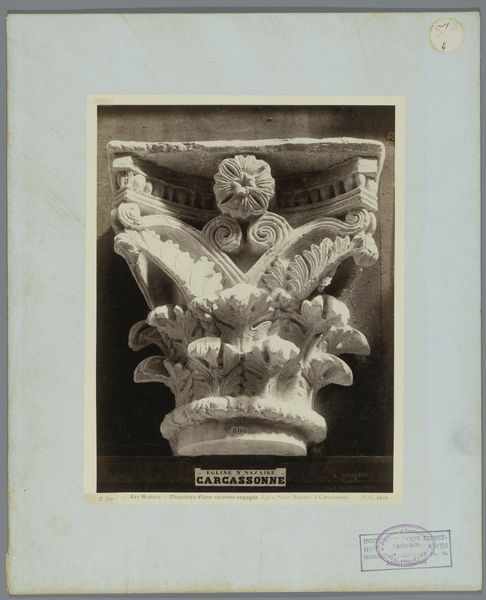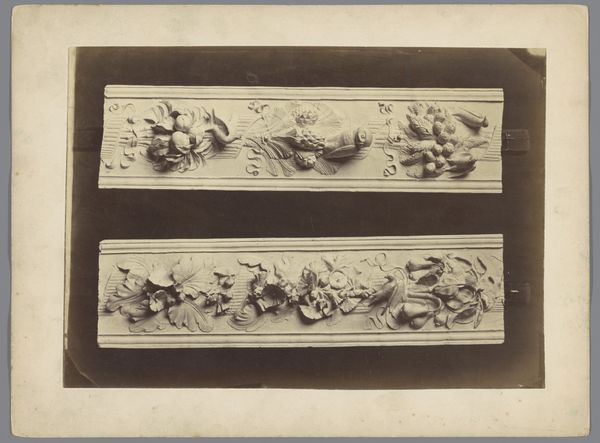
Compositie van gipsen ornamenten uit het atelier van J. Delbove, Brussel, België 1860 - 1882
0:00
0:00
relief, photography, sculpture, plaster
#
portrait
#
relief
#
photography
#
sculpture
#
plaster
#
academic-art
Dimensions: height 225 mm, width 164 mm
Copyright: Rijks Museum: Open Domain
Editor: Here we have a photograph titled 'Compositie van gipsen ornamenten uit het atelier van J. Delbove, Brussel, België' by Charles De Trez, dating from around 1860 to 1882. It’s a photo of various plaster reliefs. There is an element of decay, as this is an old photograph, but also a sense of a taxonomy or arrangement... How do you interpret this collection of objects and its presentation? Curator: This image offers a glimpse into the late 19th-century world of architectural ornamentation, doesn't it? But I am interested in the framing device here, and how it functions in light of present issues. De Trez presents these plaster casts –likely models for building facades or interior decorations – as commodities. Now, consider the social implications: who was commissioning these ornate designs? What power structures were being reinforced by adorning buildings with classical motifs? Editor: That’s a great question. It makes me think about the relationship between art, power, and the built environment. So, the photo documents more than just decorative elements. It alludes to social structures as well. Curator: Precisely. The arrangement—the way these objects are displayed and numbered—speaks to an industry catering to a specific class. We have to question the cultural values embedded in these choices. What narratives are amplified, and whose stories are silenced when we elevate a certain aesthetic in the built environment? Editor: I never thought about it that way, but now I see that even seemingly harmless ornamentation can reflect broader societal power dynamics. The plaster casts are more than decorative; they embody privilege. Curator: Exactly. By analyzing such images through a critical lens, we start to challenge the accepted norms of art history, don't you think? What do you make of that? Editor: I now see art history as inseparable from socio-political concerns. This photograph then becomes more than an aesthetic piece – it's a historical document ripe for interrogation and social dialogue.
Comments
No comments
Be the first to comment and join the conversation on the ultimate creative platform.
